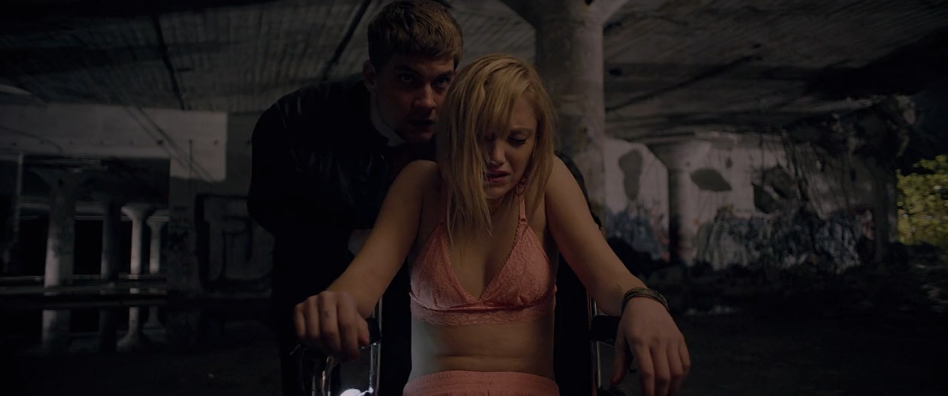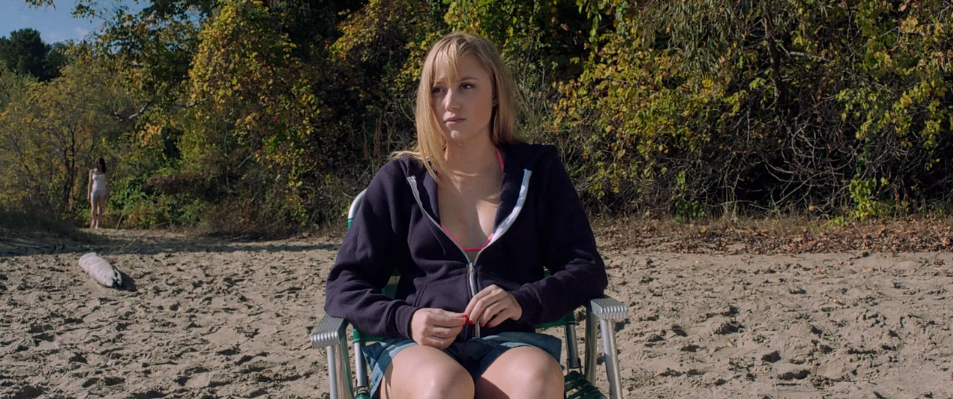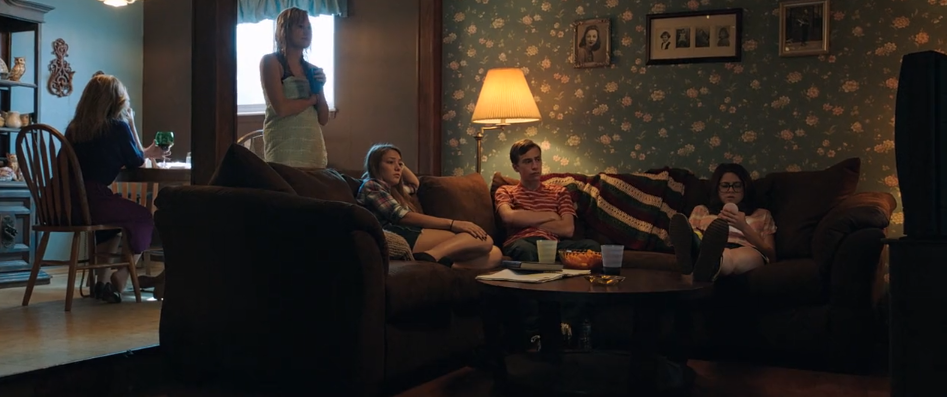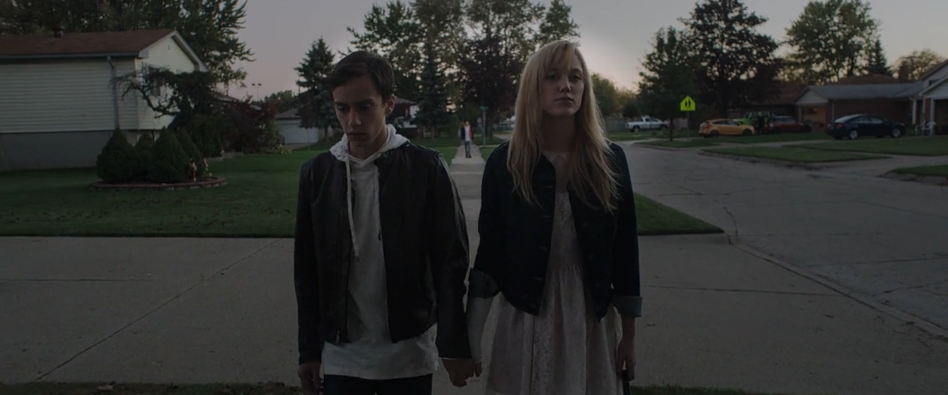Favorite Films - It Follows (2014)
Oct 01, 22
All good horror must take for its beginning a source of human fear, the more primal the source the better. Obviously, fear of death and dying is about as primal as it gets, but also sickness. Fear of darkness. Fear of the unknown. The fear of being followed or stalked. My guess is that I am not alone in having experienced the nightmare that someone or something is following me, and no matter what I do I can't get away from it. It Follows taps into that very nightmare. It's a great premise, a great starting point for a horror movie, but perhaps the most persistent problem I notice in otherwise perfectly serviceable horror films is a failure to deliver a satisfying payoff. The setups are often quite good, with many horror films opening with an intriguing premise, a novel idea, or a clever twist on an well-worn plot. The strong opening sets a trap from which few directors manage to escape, that the strong setup raises expectations so high that they are next to impossible to pay off. It Follows, released in 2014 and written and directed by David Robert Mitchell, is that rare horror film that finds its way out of the payoff problem. It delivers a satisfying ending that complements the preceeding 90 minutes of film and more than adequately pays off its excellent premise. It is a classic in the genre that stands toe to toe with the very best.
The fear of being stalked is one of those primal fears, no doubt hard-wired into us going back to our very beginnings on this planet evading, say, a sabre-toothed tiger intent on turning us into lunch. It is a fear, though, that hasn't been utilized all that well until It Follows. Zombies, to a point, employ this theme; zombies keep coming, but as a viewer, once you know they are zombies, you lose the fear of the unknown. Zombies are mindless automatons, a force of nature in a sense. They want to eat you, but it isn't personal. In It Follows, we know that the malevolent entity wants to kill, but we never understand why. The unknown is baked into the rules. The thing that follows changes its form. It can be someone you know or a stranger, and it is always shifting so you never know what form it will take the next time you see it. A character Hugh speculates that it takes the form of people you love just to hurt you, which means that this entity is sadistic, that it wants to be nasty. For this entity, it wants to hurt you, yes, but it also wants to scare you, to inflict on you utmost fright. It is personal.
So, let's talk about the rules, which are established early on in the film, as they should be. There's only one thing. If the thing is stalking you, you can pass it to someone else by having sexual intercourse with him or her. Then it will stalk that person and ignore you. You have good reason to pass it on because if it is stalking you, it never stops. It keeps coming. It can only walk, though. You can get away from it fairly easily by, say, taking a car ride across the state. However long it takes to walk there is how long it takes the thing to show up, but it will inevitably show up and if it ever catches you it will kill you, and if it successfully kills you, it will go back down the line to the person who passed it to you, and so forth, so even if you passed it along, you really can't be at ease. The only people who can see the thing are people who are being or have been stalked. To everyone else it is invisible. As I said before, it always takes human form, any human form, from someone you know to a stranger you've never met. And even though it is invisible to people who are not being stalked, it does have physical substance. It can be knocked down or shot, and if it catches you it will maul you to death.

The film works on several levels. It works as a straight up monster movie. It works in the realm of metaphor, with the most obvious interpretation that the thing is an STD, and the movie is commenting about the dangers of promiscuious sex. On another level, though, the film offers a commentary about the tragedy of having to grow up, about of the human right of passage from the innocence of childhood to the brutality of adulthood, and sex is just one of the currencies with which adults transact.

The film zeroes in on a small cast of teenagers, with absolutely no adults getting any significant screen time. The above screenshot tells the tale with the teens hanging out and watching something on television while mom sits off to the side nursing her glass of merlot, her back to the camera. We have two different worlds here, the world of these adolescents, and another world, the adult world, looming in the background like a storm cloud on the horizon.
Even though we are in this adolescent world, Mitchell keeps these characters at arm's length throughout the picture, in some sense breaking a fundamental rule that we need to have strong characters that we care about for a movie to work. It Follows, then, is the exception that proves the rule, because at no point do I know or care about any of these characters, yet this film absolutely works because of that, not in spite of it. Even though I've seen this film probably five or six times, I still had to do a web search to be sure the lead character is named Jay, played by a lovely Maika Monroe. Jay has a date with a guy she likes, Hugh, and it goes well enough with the exception of Hugh getting spooked by something in a movie theater and the two leaving in a hurry. The next day, while walking with her sister Kelly, Jay makes it clear that she didn't have sex with Hugh on the first date, and that's an important point in this film as on the second date, Jay and Hugh have intercourse in his car, after which he drugs her with a rag soaked in chloroform and ties her up to a wheel chair.
I love the logic of this maneuver. Hugh is doing Jay a huge favor, even though it is self-serving. He needs Jay to be captive so she will listen to the rules and maybe survive long enough to pass the thing along to someone else, thus giving Hugh an extra layer of security. He explains the rules in a hurry, though, because the thing has already found them. In the form of a naked woman, it walks right past Hugh and goes straight for Jay. They evade it, and Hugh drives Jay home and leaves her dumbfounded and bedraggled in the street in front of her house. After some close calls and some investigative work, in no time flat Jay goes from a no-sex innocent first date to flagging down a boatload of frat-boyish revelers for a desperate (off camera) four-way.
The thing about being the girl intent on passing it on is that while it is easy for women to get sex, most guys have to work at it, and none of Jay's efforts yielded long-term success because the thing keeps coming back. Eventually, in what is a memorable climax, the crew decides to try to kill the thing by electrocuting it in a swimming pool. It sounds goofy, but it absolutely works in this film and it provides imagery that sticks with you.
The last scene of the film we get Jay and Paul in their white shirts walking the sidewalk holding hands as a couple. Jay has passed it to Paul, you see, but the movie leaves the outcome ambiguous. Were they able to kill the thing in the swimming pool? Can it even be killed? None of that is made clear, but what we do know is that trailing behind them a little ways is a person who suspicously looks a hell of lot like Paul. Not good.

I love this movie. It is one of the very few horror movies I can watch any time, and its layers provide plenty of fodder for analytical thinking. During the screening I did in preparation to write this review, I paid attention to the school teacher's reading of "The Love Song of J. Alfred Prufrock" by T.S. Eliot, which I hadn't noted before, and that led me to reread Prufrock and, yeah, the whole existential adulthood problem is pretty much unavoidable in this movie, and I love it for that, because adulthood sucks, and then you die, shit stalking you, in various forms, all the while.